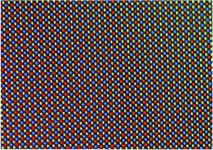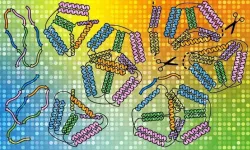(Press-News.org) A new test that measures the quantity and quality of inactive HIV viruses in the genes of people living with HIV may eventually give researchers a better idea of what drugs work best at curing the disease.
Currently no cure exists for HIV and AIDS, but antiretroviral therapy drugs, or ARTs, effectively suppress the virus to undetectable levels.
Published today in Cell Reports Medicine, the study discusses how a new test, developed jointly by scientists at the University of Washington School of Medicine and Fred Hutchinson Cancer Research Center, will give researchers, and eventually doctors, an easier way to gauge how much HIV virus might reside in a patient's genome.
This latent HIV reservoir results from HIV's integration into DNA, specifically in the chromosomes of T lymphocytes and macrophages, said Dr. Florian Hladik. He is the paper's senior author and a UW research professor of obstetrics and gynecology. Viral integration into the host cell genome is a unique feature of retroviruses, he added.
Current tests are complicated, expensive, and sometimes give inaccurate readings of viral load, said Hladik. The two existing tests are done through sequencing the viral DNA from patient cells or inducing functional viral outgrowth in vitro from patient cell cultures. Both are time-consuming and expensive and do not lend themselves easily to the testing of new drug candidates to cure HIV.
"Our laboratory test is a simpler way to quantify the reservoir of intact viruses" he said.
The evaluation of novel therapies to cure HIV infection relies on repeatedly measuring the number of cells that contain HIV DNA before, during and after treatment. Current assays do not give this information quickly enough or with enough accuracy to be useful in future clinical trials. And some of the assays require several blood draws from each patient-subject.
The test works by using a new type of assay that takes advantage of the multiplexing capacity of droplet digital polymerase chain reaction (ddPCR). It probes each isolated DNA molecule not only for the presence of integrated HIV DNA, but also to determine whether the viral DNA is intact or defective. Commercial software and custom analyses are used calculate the number of T cells containing intact HIV DNA in the genome.
"This gives us a lot more information about the particular virus in a person's body than previous PCR assays," added Claire Levy, a UW research technologist in OB-GYN and the paper's lead author. Previous assays, she said, were only partway effective - like searching for someone's information online and learning only their first name. To continue that analogy, the new assay would yield more information, such as full name, age and height.
In the case of HIV, this extra information about the virus helps scientists understand how it is behaving in the human body.
Practically, this new PCR assay will help researchers determine the effectiveness of a drug candidate being tested against HIV/AIDS by closely tracking how many cells with intact HIV DNA exist after each dose, Levy and Hladik explained.
"I can see a patient going to a doctor and adding this to the list of questions they might ask. Now they ask about their viral load and T-cell count. I hope in the future they may be able to ask how large their HIV reservoir might be," Hladik said. "What gets me excited is that one day, this number may tell them how long it will take to entirely eliminate HIV from their body."
INFORMATION:
While pollinators such as bees and butterflies provide crucial ecosystem services today, little is known about the origin of the intimate association between flowering plants and insects.
Now, a new amber fossil unearthed by researchers from the Nanjing Institute of Geology and Palaeontology of the Chinese Academy of Sciences (NIGPAS) and the University of Bristol sheds light on some of the earliest pollinators of flowering plants.
The study was published in Nature Plants on April 12.
Two hundred million years ago the world was as green as today, overgrown with dense vegetation, but it was not as colorful. Flowering plants (angiosperms) that make up over 80% of all plant species today, only began to diversify in the Cretaceous, about 125 million years ago.
Some scientists have attributed ...
A new 160-million-year-old arboreal pterosaur species, dubbed 'Monkeydactyl', has the oldest true opposed thumb - a novel structure previously not known in pterosaurs.
An international team of researchers from China, Brazil, UK, Denmark and Japan have described a new Jurassic pterosaur Kunpengopterus antipollicatus, which was discovered in the Tiaojishan Formation of Liaoning, China.
It is a small-bodied darwinopteran pterosaur, with an estimated wingspan of 85 cm. Most importantly, the specimen was preserved with an opposed pollex ("thumb") on both hands.
The species name 'antipollicatus' ...
Singapore, 12 April 2021 - Researchers from the Low Energy Electronic Systems (LEES) Interdisciplinary Research Group (IRG) at Singapore-MIT Alliance for Research and Technology (SMART), MIT's research enterprise in Singapore, together with Massachusetts Institute of Technology (MIT) and National University of Singapore (NUS) have found a method to quantify the distribution of compositional fluctuations in the indium gallium nitride (InGaN) quantum wells (QWs) at different indium concentrations.
InGaN light emitting diodes (LEDs) have revolutionised the field ...
A new study conducted jointly by the Univerisyt of Liege (Belgium) and the University of Reading (England) suggests that 34% of the Antarctic ice shelves could disappear by the end of the century if the planet warms up by 4°C compared with pre-industrial temperatures. This melting could lead to a significant rise in sea levels. This study is published in the journal Geophysical Research Letters.
Since the early 2000s, scientists have observed that the Antarctic ice sheet is losing mass at a rate that is accelerating. The ice sheet is a very thick expanse of ice that can cover an entire continent. There are only two ice sheets on Earth: the Greenland ice sheet, which is limited to the ...
A shared set of systems in the brain may play an important role in controlling the retrieval of facts and personal memories utilised in everyday life, new research shows.
Scientists from the University of York say their findings may have relevance to memory disorders, including dementia, where problems remembering relevant information can impact on the daily life of patients.
Researchers say the findings may also have important implications for the development of a new generation of artificial intelligence systems, which use long-term memory in solving computational problems.
The brain's long-term memory stores are categorised into two: factual memory ...
Researchers at the University of Toronto have found that a calorie labelled is not the same as a calorie digested and absorbed, when the food source is almonds.
The findings should help alleviate concerns that almonds contribute to weight gain, which persist despite the widely recognized benefits of nuts as a plant-based source of protein, vitamins and minerals.
"Nuts have generally been thought of as healthy the last two decades, but the messaging around nuts has often come with a disclaimer that they are high in fat and energy," said John Sievenpiper, ...
Inland waters are an important component of the global carbon cycle and function as active reactors, transporting and transforming large quantities of naturally- and anthropogenically-derived carbon. Previous studies suggest that inland waters are major sources for greenhouse gas emissions to the atmosphere, yet these emissions are poorly constrained (Note 1).
As a primary greenhouse gas that drives global climate change, carbon dioxide (CO2) emissions from inland waters play a key role in assessing global carbon cycle. While most efforts over the last decade have focused on refining the emission flux estimates at the regional and global scales, scientists do not fully understand the responsiveness of regional ...
A recent study finds U.S. companies that have a substantial number of employees in foreign jurisdictions with lower tax rates are more likely than their peers to "artificially" locate earnings in those jurisdictions - and the Internal Revenue Service (IRS) is less likely to challenge these complex tax-planning activities.
"Many politicians seek to encourage domestic employment and discourage sending jobs overseas," says Nathan Goldman, co-author of the study and an assistant professor of accounting in North Carolina State University's Poole College of Management. "To do that, they'll need to address elements of corporate tax policy that effectively encourage ...
Origami may sound more like art than science, but a complex folding pathway that proteins use to determine their shape has been harnessed by molecular biologists, enabling them to build some of the most complex synthetic protein nanostructures to date.
Using EMBL Hamburg's world-class beamline P12 at DESY's PETRA III synchrotron, a team of Slovenian researchers, in collaboration with EMBL's Svergun group, directed powerful X-ray beams at artificial proteins called coiled-coil origami. The proteins were designed to fold into a particular shape based on short modules that interact ...
Smoking cannabis when you're young may increase your risk of developing heart disease later, according to a recent University of Guelph study.
In the first study to look at specific risk indicators for cardiovascular disease (CVD) in young, healthy cannabis users, researchers found subtle but potentially important changes in heart and artery function.
Cigarette smoking is known to affect cardiovascular health, causing changes to blood vessels and the heart. Less is known about the impact of smoking cannabis on long-term CVD risk, even as use of the substance grows in Canada and abroad. Cannabis is the most commonly used recreational substance worldwide after ...





